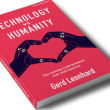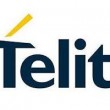

A review of the latest book by Gerd Leonhard, futurist, keynote speaker and author. I’ve been writing about technology for many, many years and along the way I’ve come to the conclusion that guru-type predictions tend to be pretentious and all too often they turn out to be wrong. (more…)
September 23, 2016
Posted by: Avadhoot Patil

Engineers from Vodafone and Huawei have completed the first over-the-air connection on a live network using standardised NB-IoT. The commercial trial took place in Madrid, Spain. (more…)
September 22, 2016
Posted by: Avadhoot Patil

GE’s Automation & Controls business introduced GE’s new Industrial Internet Control System (IICS) at its 2016 Connected Controls Symposium at the company’s Global Research Center in Niskayuna, NY. (more…)
Posted by: Avadhoot Patil

Automotive supplier, Valeo has partnered with Gemalto, provider in digital security, to ensure the security of its virtual car key system called Valeo InBlue®. (more…)
September 21, 2016
Posted by: Avadhoot Patil

The British manufacturing industry is experiencing a seismic shift in priorities, with digital transformation shaking up traditional working models and processes, writes Damian Hennessey, the commercial director at Proto Labs. (more…)
Posted by: George Malim

Silicon Controls, a global provider of tank & cylinder monitoring devices (GASLOG™), Sigfox, a provider of dedicated communications service for the Internet of Things (IoT) and Thinxtra, the exclusive Sigfox network operator (SNO) for Australia & New Zealand, have announced a strategic partnership agreement. (more…)
Posted by: Avadhoot Patil

InterDigital, Inc., a mobile technology research and development company, announced that it has joined Avanci, said to be the industry’s first marketplace for licensing cellular standards-essential technology for the Internet of Things (IoT). (more…)
Posted by: Avadhoot Patil

Telit, a global enabler of the Internet of Things (IoT), announced the commercial availability of its BlueMod+S42 Bluetooth 4.2 module, and two variants of the popular SL869 single and multi-standard positioning module family, the SL869-V3 and the SL869-ADR. (more…)
September 20, 2016
Posted by: Avadhoot Patil

In a series of blogs, Rajant Corporation’s director of business development, Todd Rigby, discusses the major role the Internet of Things will play in the rise of industrial robots and autonomous vehicles and the necessity of wireless networks in ensuring the smooth operation of such machines in various industries. (more…)
Posted by: George Malim

Telit, a global enabler of the Internet of Things (IoT), has announced major updates to their IoT Portal. Now, users can switch network providers on the fly, ensure data continuity, (more…)
September 19, 2016
Posted by: Avadhoot Patil